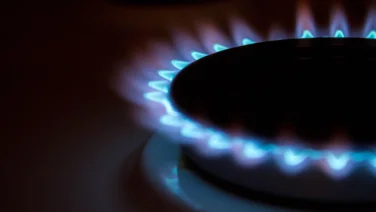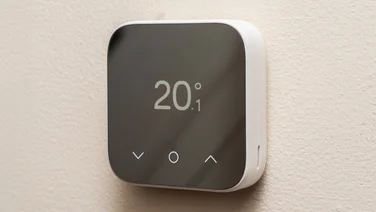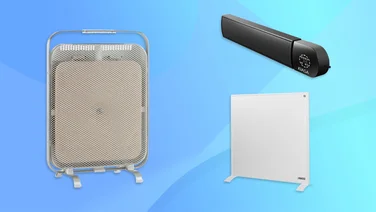To help us provide you with free impartial advice, we may earn a commission if you buy through links on our site. Learn more

Solar panel maintenance is a whole lot easier than, say, car maintenance. Solar PV panels are built to survive storms for decades; but even though these durable devices don’t require annual MOTs, they’re well worth looking after to ensure they work at their best.
The most important part of maintaining your solar panels is keeping them clean, and you can get the full lowdown on the best way to do this in our article on cleaning solar panels. But even the shiniest panels can suffer hitches in their likely 30- or 40-year lifespan. Problems with the inverter, performance dips, and scratches from falling debris are among the possible issues that could occur.
In this article, we’ll explore the issues with maintenance that you may face, explain how to spot and diagnose them early, and reveal the next course of action – whether or not that involves calling in the professionals.
Get a free solar panel installation quote today
Take our quick survey below to find out how much solar panels could cost you.
What are the main things I can do to maintain my solar panels?
Durability is part of what makes solar panels such a great investment. Your solar PV (photovoltaic) system is probably guaranteed to keep working for 25 years, and many of the models featured in our rundown of the UK’s best solar panels are guaranteed to perform at 85% or more of their original level following 40 years of use. Not many other types of appliance can boast such a lifespan.
But there are always things that you can do to ensure your solar panels continue to work at their best for as long as possible. These basic must-dos apply to all solar PV systems:
Clean your panels every six to 12 months. Some solar panel warranties even specify that panels must be cleaned. However, stay on the ground. An extendable water-fed cleaning brush, leaf blower or garden hose should do the job; you won’t need a ladder or a pressure washer. And be gentle – chemicals and abrasives can do more harm than good by creating lots of little scratches.
Remove potential dangers such as overhanging branches that could be blown onto your panels by the wind, and keep ivy well away. Even small scratches created by leaf fall and other foliage can affect the performance of your panels.
Don’t stand or kneel on your panels. Tempered glass or no tempered glass, your bodyweight should be nowhere near those precious panels!
What are the biggest solar panel maintenance issues?
Even when you treat your solar panels with great care, issues can arise – and some elements of a PV system tend to need replacing sooner than others. Here are the main problems you may encounter:
1. Under-performance – If your panels suddenly stop producing as much electricity as they can, or should, it’s worth looking into immediately – not least because you’ll want to be getting your money’s worth from your PV system.
The reasons could be as simple as leaf fall on the panels, which you can deal with from ground level using a leaf blower. Or it could be the result of damage to the panels or a misalignment in the cabling system, for which yoou’ll need to call in a solar panel engineer. The cost of a fix will depend on the cause, but an electrician who specialises in solar panel maintenance will charge around £80-£100 for a call-out.
2. Inverter faults – The inverter (or set of micro-inverters) is the device that converts DC electricity into safer AC current that you can use in your home. It’s the one part of a solar PV system that tends to need replacing within the lifetime of the panels, usually after 15 years or so.
Sometimes, an inverter fault can be fixed by a system reboot; but if that doesn’t do the tirck, then may be it’s time to call out a specialist. If your inverter needs replacing, expect to pay from £500 to about £2,000.

3. Scratched or broken panels – Solar panels are built from incredibly tough materials, with a surface that’s made of tempered glass (also known as toughened or safety glass). But while this glass is incredibly strong, it isn’t unbreakable. According to the solar PV risk assessment specialists at Sinovoltaics, solar panels can and do break during manufacture and shipping. “Glass is the most used material to give strength to solar panels; however, this might change in the future,” they said.
Until then, there remains a risk that your panels could become damaged as a result of heavy-falling debris – during a storm, for example. When tempered glass does break, it shatters into thousands of small pieces, which are kept contained within the panel’s solid frame. If this happens to one of your panels, you can replace it – at a cost of around £500 including installation – rather than your entire system.
Scratches on solar panels are highly unlikely to create weak points in the glass, but lots of scratches can impact performance.
How can I check for problems with my solar panels?
First, look at them regularly. Get your binoculars out, or use the zoom mode on your phone’s camera to get up close from a safe distance. Check for dirt build-up or problems with the mounting system, such as bolts looking loose.
Next, keep an eye on your system’s energy generation figure. This number on your solar PV generation meter is the most accurate source of performance data. To see if your system is working as it should, compare the meter’s reading with the estimated annual generation figure on the MCS (Microgeneration Certification Scheme) certificate that you should have received when your panels were installed.
The generation meter doesn’t tell you anything other than that figure, though. For a more detailed insight into the day-to-day health of your PV system, use a monitoring app that displays data from your system’s inverter.
Most modern solar PV systems come with a monitoring dashboard that you can access via an online platform, mobile app or both. Use your app to track energy production and other metrics in real time, so you can keep an eye on day-to-day performance. Your system should produce about the same amount of energy at midday each day, if the conditions are similar. Deviations could be a sign that something is wrong.
What are the best solar panel monitoring apps?
As standard, all solar PV systems now come with online monitoring that tells you:
- How much power is being generated, in real time;
- How this compares with your system’s past performance data;
- System details, including the charging status of your solar battery if you have one, and your Smart Export Guarantee data.
The best solar panel manufacturers’ monitoring apps include those from SolarEdge (here’s an online demo) and Enphase Energy (demo). Both let you access your data via an API as well as an online portal and mobile app. The API will be useful if you want to customise the display, or integrate your solar PV system with your smart home. SolarEdge and Enphase Energy provide you with the ability to monitor individual solar panels, a feature that isn’t available across all apps.
Third-party apps are available, too, but these tend to be aimed at commercial users. Solarfox, for instance, is used by solar PV companies to visualise a system’s solar output – a very handy sales tool as well as being useful for diagnostics.

The quality of manufacturers’ apps vary (some are only partially translated from Chinese, for example), so it’s worth doing some research and reading reviews if you’re still in the process of deciding which solar panels to buy.
How do I reset the inverter?
Your solar panel system’s inverter should display a green light when all is well; yellow or red suggests a problem. Inverters usually display a fault code to indicate the issue. For example, Error 314 is a calibration timeout that should sort itself out when the inverter repeats its start-up routine.
Inverters are basically computers, so a hard reset is often all that’s needed to solve a problem. Even if the problem is obvious and seems unfixable – for example, your system has stopped generating electricity altogether – then a reset may fix it.
The first step is to check your system’s manual for details on how to do this safely, because all PV systems and inverters have slightly different reboot procedures.
The steps are usually as follows:
1. Power down the inverter via the AC/DC toggle switch;
2. Turn off the solar AC disconnect via the grey disconnect box;
3. Turn off the solar breaker in the main electrical panel;
4. Wait a minute, then go back through the steps (in reverse order this time) to turn it all back on again.
If you’re not comfortable following the steps above then you should call in a solar PV engineer. Give them the error number, if there is one, plus the inverter’s make, model and serial number.
Who should I call for solar panel repairs?
Contact your installer. Solar panel installers are usually electricians or electrical contractors who are qualified to fit and service solar panels. Your installer’s details should be displayed at the system inverter or in the system handover pack. If you’ve had your panels installed through an agent, then contact them for your installer’s details.
You don’t have to go to your original installer if you don’t want to, or if they’re not available. To find a solar panel installer, head to the MCS website.
It’s worth being aware that on a legal level, general solar panel maintenance can be carried out by a suitable qualified electrician; they don’t have to be MCS certified. Nevertheless, we’d advise using a MCS-certified tradesperson so you can be sure that they know their solar panels inside out.
Should I get my solar panels serviced?
Solar panels don’t need an annual service in the way that a car does, but it’s worth getting them serviced every five years or so, even if your system is working well. This will ensure that there are no hidden problems that could prove expensive one day, and it will also give you peace of mind that your panels are working as efficiently as they should be.
During a service, an MCS-accredited solar panel installer will carry out visual checks on the panels and cabling, and then test the inverter and generation meter. They’ll do a complete DC electrical test of the solar panels and strings, then an AC electrical test of the inverters, isolators and protective devices.
They should leave you with a service report that sets out the status of your system and any work that needs doing, including cleaning.
How much does a solar panel service cost?
A service will set you back around £100. That’s a good price for five more years of reassurance that your renewable energy-producing system is humming along nicely.






